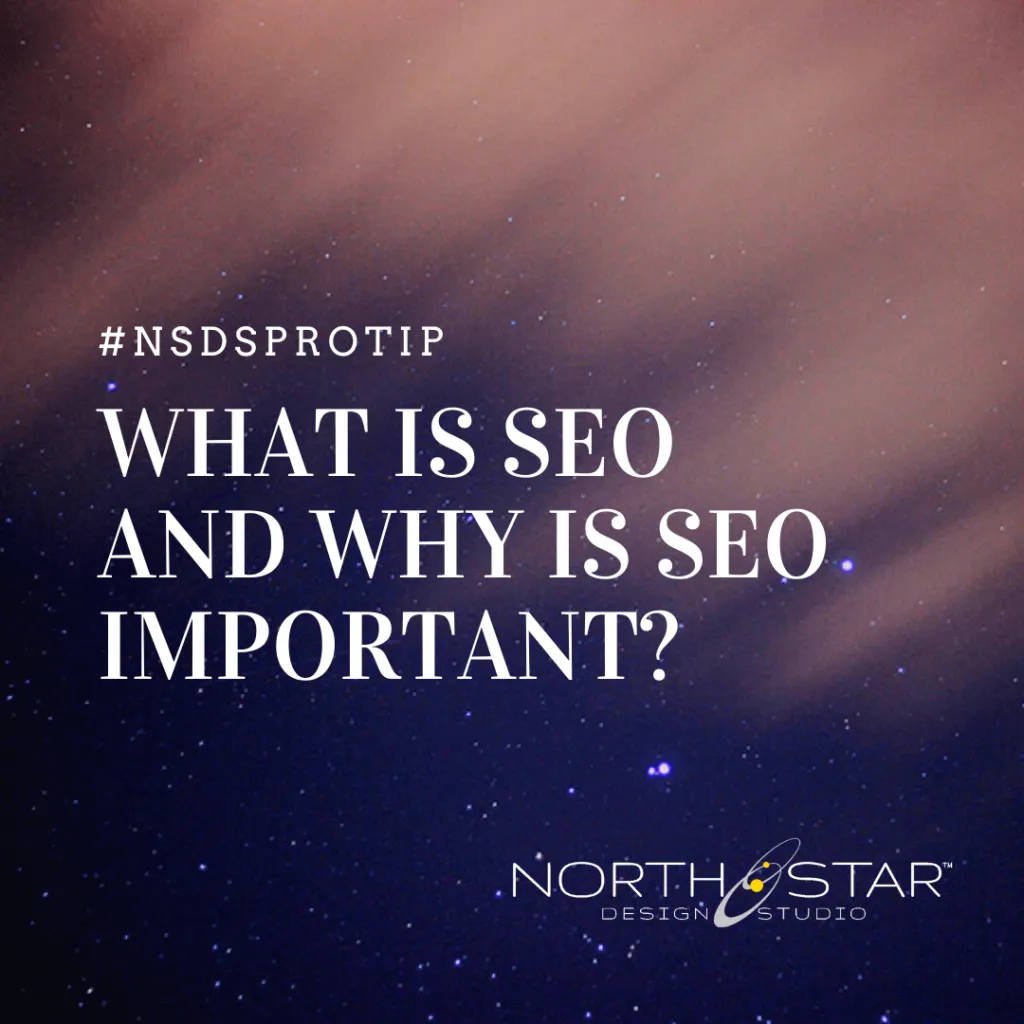SEO is the foundation upon which your digital presence is built.
Service-based business owners often ask, What is the importance of SEO for their business? SEO is the process of affecting the visibility of a website, video, or blog in search engine results. Search engine optimization, or “SEO” for short, refers to a number of practices that can be implemented on a website that will help search engines rank a site higher in their results pages. Like website maintenance, Search Engine Optimization is an ongoing process, but the rewards are well worth the time and effort.
This article will explain what SEO is and why it’s important for service-based business owners to take advantage of this digital marketing strategy.
What is SEO?
Search Engine Optimization, also known as SEO is a term that describes a set of online marketing practices that website developers and internet marketers adopt in order to increase the number of visitors they get from search engines.
SEO is the process of affecting the visibility of a website or web page in a search engine’s “organic” or “natural” search result. This process involves improving both on-page and off-page SEO strategy.
Search engine optimization consists of many components but can be broadly divided into two categories: on-page and off-page optimization techniques.
On-page optimizations are tactics applied by webmasters (web designers/web developers) on the website itself to help it rank better for search engine queries and getting more organic traffic.
Off-page optimizations include building backlinks to your site and keyword rank monitoring among other things. Offsite techniques may not have as large an impact as onsite optimizations, but they’re still important and help build authority via ‘social proof‘.
How does SEO Work?
Search engine rankings have become an increasingly popular topic in recent years, but how do they work? Ranking is what search engines use to figure out which websites are the most relevant for a request.
Rankings are often based on numerous factors, with precise methods varying by the provider. A major factor in Google’s calculation is its “Page Rank” system, or PR-a score based on the number and quality of links pointing to the page. They also take into account your geographical location. Other factors can include things like domain age, quality content and freshness.
It’s complicated to find a single, unified algorithm to create perfect SEO technique, but there are some universal factors that affect ranking. These include the number of links pointing back to your website (link building), how often other reputable websites mention your site, and consistency with keywords in on-page content.
While no one algorithm can boast spot-on accuracy across search engines, Google does have four major indexes that are developed separately yet designed to provide relevant information for different needs or preferences:
• Personalized Searching: which includes searches created by logged-in users
• Social Networking: includes sites appearing in Google+ circles
• Content Queries: including discussions about specific topics on social media networks
• Knowledge Base: published articles, blogs, FAQs, etc. hosted right on your website
Diving Deeper into the Types of SEO
Technical SEO
Technical search engine optimization is the tweaking of technical methods, like meta tags and website speed, to make it rank better in search engines like Google.
The technical side of SEO is a kind of inbound marketing; in fact, it’s the key to inbound marketing. Search engines, like Google and Bing, rank web pages based on their ability to prove that they are valuable sites. To do this they analyze the site for things like how well written is its content? How often does it change? Does it provide interesting content to users? Can people link to your website from other websites (a sign of popularity and brand awareness)?
It includes information about HTML code (that can be copied by search engine crawlers), home page meta tag code (information used by browsers when displaying the site), and more specific tags with keywords relevant to your services.
Speed is one of the most important aspects of SEO because slow-loading websites can lead to higher bounce rates and reduce conversions. This means that sites with fast page load times will typically rank better than competitor sites. Depending on your type of business, quicker load times could translate into an increase in income per visitor or even increased revenue in general. Basically, web design needs to be able to respond quickly for users looking for information on their devices without getting bogged down by bloated features or non-image files.
On-Page SEO
On-page SEO refers to the actual content on your website and its ability to help the search engines ‘crawl’ and index your site for better search engine ranking.
One of the most powerful methods to leverage ‘on-page SEO’ is to carefully optimize specific sentences, phrases, and keywords throughout the content on the page to increase website traffic.
The first step to improving your search engine optimization is to conduct keyword research to find out which keywords are the most relevant/popular, and also what keywords people are using for searches on your site. This will allow you to optimize your content for those popular terms.
Second, take a page from the competition’s book by checking out what they’re doing well. This includes things like how descriptive their title tags are, their meta tags, meta description and subheadings hierarchy, etc. The more data points you collect about competitors’ strategies online, the easier it will be for you to produce an even better strategy that will rank higher in searches results pages (SERPS).
Third, is to marry these two data sets together to define a keyword strategy and then write content, meta, and slugs that support the SEO tactics.
Off-Page SEO
Off page SEO is more or less any unpaid marketing you do ‘off the site’ to improve your site’s visibility. This includes, but is not limited to, using social media channels to promote your pages and content. And conducting reputation management via social media channels and customer review sites like Yelp.
#NSDSPROTIP
You can actually provide amazing customer service to prospects well before they become clients by responding to your customer reviews. Responding to reviews is a great way for providers to engage with their customers and win trust from prospects.
Every company should respond proactively to positive Google reviews, because this boosts search engine authority. When a review is posted on Google, it ranks higher in the search rankings than when other companies post their own review. If other people see that other people think your business is the best at what you do – they’re more likely to choose your business and become longterm loyal clients or repeat clients (daily/weekly visitors).
Off-page SEO techniques allow businesses to either gain direct reach with users or provide more opportunities for potential customers/clients to find them without depending exclusively on their ability to rank well in SERPs for specific keywords.
It’s important to provide value to potential customers through your site’s content, social media posts, and google business listings. Additionally, it is important to maintain high-quality customer service so that people know they can trust you when buying items off-site.
#NSDSPROTIP
Negative reviews, they will happen. A great way to respond is to use the convo off-line. Affirm how important their satisfaction is to you and offer a direct tele or email to discuss a resolution. After you’ve addressed the issue (hopefully the client is now satisfied), respond to the post AGAIN and make note of the resolutions , “Hey Amy, I’m so glad we were able to connect and clear up the misunderstanding about our office hours. Please do swing by at your earliest convince for your complimentary Home-care kit, our way of saying ‘thank you’ for trusting us with your therapeutic care.”. A response like this tells prospects you really do care about their experience AND it gives the reviewer a chance to reply and even amend their review rating (star-score).
Backlinking is also an important step in off-page SEO and a key part of content distribution. It builds authority, promotes content, and increases engagement. As such, building your backlink profile is a good thing! Why? You can think of each site as having a power level that’s measured by its PageRank.
Google uses it to rank the relevancy of individual pages on the web – and you can go higher if other influential sites link to yours. Search engines see this as a positive signal and reward you with better rankings for your page than those who don’t have any incoming links or shares from competitors; they’re seen as more popular because their information has spread farther around the Internet (it’s reached more people).
What is SEM?
SEM (Search Engine Marketing) is a method of internet marketing that involves the management, optimization and bidding for search engine ad space. While SEO is part of SEM, typically digital service providers consider them separate ‘entities’. Most notably, off-page SEO often overlaps with paid SEM and (in our experience) off-page SEO services are best delivered by the same agency handling a website’s paid SEM as the two strategies will overlap. Ask us for an SEM agency recommendation here.
SEM strategies might include keyword research to identify appropriate keywords. These keywords/phrases may overlap or differ from your initial SEO keyword strategy depending on the target audience, platform, and conversion goals of a specific SEM strategy.
A good example of where off-page SEO and SEM overlap is with online business profess (think your business FB page or Google My Business Page). Listings Management is the process of making sure that pages and searches across a website present themselves in a uniform and professional way. This helps improve the site’s reputation, ranking, and authority with search engine algorithms to reflect their content or expertise.
Listings management also helps unify the internal message of your company by using consistent descriptions, headings, logos, images, and other visual elements. The more unified these features are throughout your site; the stronger your authority will be to rank at or near the top of popular search terms for keywords related to your business. While listings management sounds complicated at first it is actually pretty simple: make everything look like it belongs together!
What comes first, SEO or SEM?
While these two pieces have a symbiotic relationship and can be done in tandem, ad a rule, technical SEO and on-page SEO should be done before anything else because it is needed to make sure that the site can be crawled and indexed by search engines.
SEO is the foundation for SEM. If you have excellent, user-centered on-page optimization, your site will be easier to index and map on Google searches, which ultimately leads to higher rankings in SERP. Furthermore, there are many examples where ranking positions improved significantly after only minor changes were made to the underlying root cause(s) and this was verified through analytics tracking or Google Search Console analytics data (i.e., better CTR percentages).
That being said, SEM can drive sales of your products or services if consumers are searching for relevant keywords that match up with what you’re offering. After all, they clicked on content via a SERP result – it’s an indication that their search led them straight to their desired purchase! With SEO coming first, however, there’s no question about where to invest time and money in order to get the best results
Low Hanging Fruit
For business owners looking to move the needle with DIY SEO pieces that don’t involve diving into their website’s back-end, we recommend dabbling in some off-page SEO.
Managing Business Profiles
Managing business profiles involves establishing a social media presence on sites such as Facebook, Twitter, and Instagram. Manage your SEO business listings by having all pertinent information up to date, including hours of operation, contact information, website address(es), etc. Not sure where you’re listed? Go ‘google’ yourself and see where you come up. Click every link on the first 2 pages and see if the information is accurate. If not, try to claim the profile (usually free) and update the information.
Reputation management
Responding to reviews of your business helps maintain public trust for your product or services by addressing negative feedback from customers.
Social Media
Engaging on social media entails posting content that is relevant to your field on a consistent basis on all the major platforms. An important note here is that you don’t have to be on EVERY social media platform. If SM isn’t your thing (and for many, it’s not), just pick 1 or 2 platforms (ex: LinkedIn and Facebook) and ‘show up’ consistently.
Key Takeaway
When you’re starting to think about how SEO can help your business, it may feel overwhelming. There is a lot of information out there and most people don’t have the time or knowledge to do everything themselves.
Creating an effective SEO strategy starts with understanding what search engines are looking for when they rank websites in their SERPS (search engine result pages). It also requires identifying keywords that will drive more traffic to your site and incorporating them into content strategies from keyword research all the way through design decisions like typography choices.
While you could try DIY pieces of SEO such as off-page profile management, if you really want to get started on ranking success with Google’s algorithms then start by creating a keyword strategy and designing content that supports it.
Ultimately, the foundation of SEO and SEM begins with strategy, content, and design. It’s not enough to simply create great content or rank highly for a keyword in Google Search results – you need your website built on the same principles that drive best practices in search engine optimization.
With so much competition out there today, it can be difficult to take advantage of these opportunities when starting from scratch. That’s where we come in! We offer free consultations that will help you determine which type of SEO plan is right for your business goals and budget needs. Schedule one now by clicking here!





